‘Harmony with colours, shapes and materials. Harmony is the lifeline of Nipa’s art piece.’
These words by Akihito Matsumoto, one of Maksuda Iqbal Nipa’s Mentors, are the perfect words describing her work, which follows the Minimalist Abstract Expressionism movement. The movement was born right after World War II, in a world drowning in despair. Centre of this movement was New York, where a lot of European artists, writers, poets, collectors and dealers had fled.
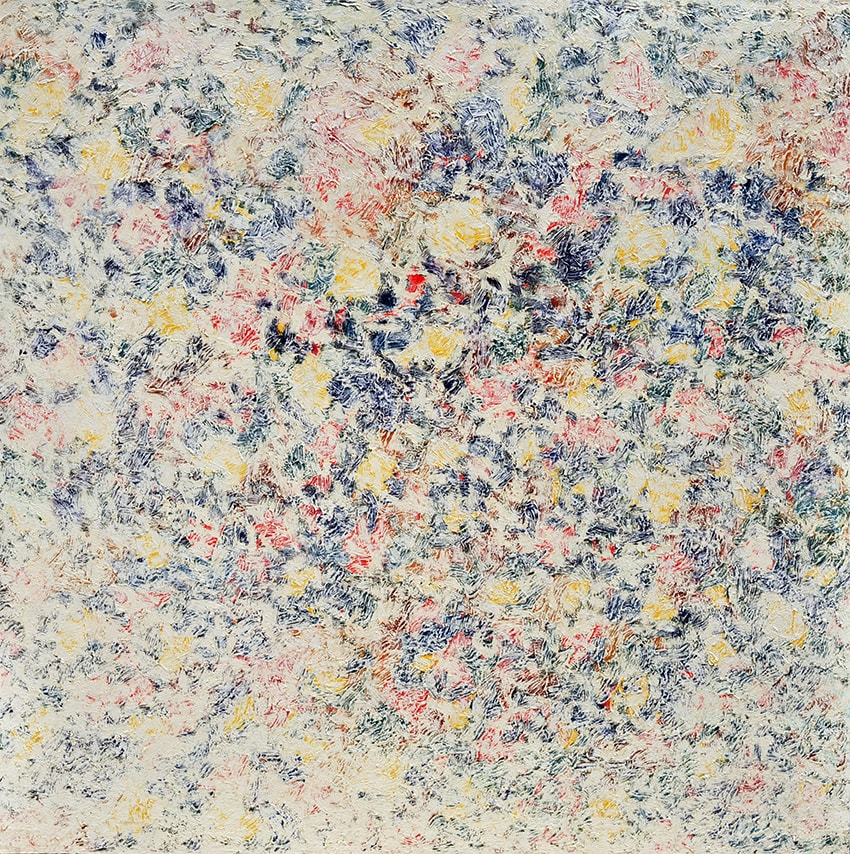
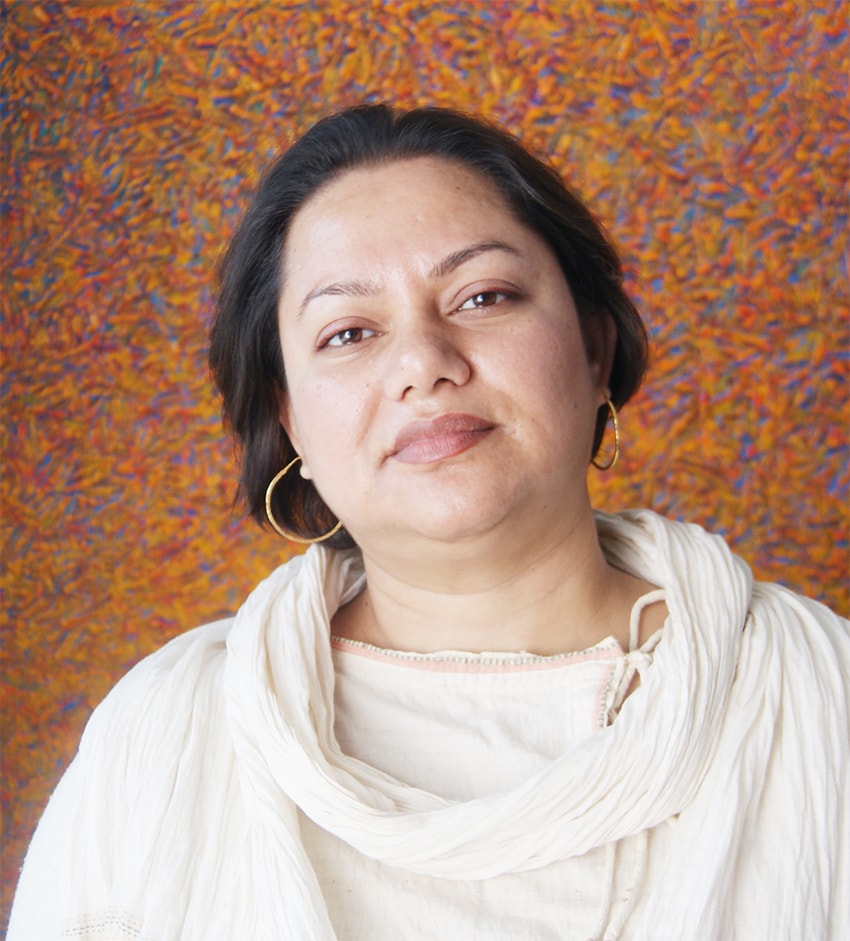
Troubled by the dark side of humanity unmasked by the horrors of war, a new expression of art flourished through abstraction. Expressionism developed into a mode of articulating the inner feelings of the artist rather than the object of the art. Earlier works by Abstract Expressionists somewhat resembled surrealism and took inspiration from mythical forms. In time, abstract expressionism turned reflective and cerebral, and the more notable works simplified into a view to creating an elemental impact. Maksuda Iqbal Nipa’s work invites the viewer into her version of minimalistic abstract expressionism. Her vision is to be remembered as one of the leading figures in the history of this movement, and as such she strives to surpass herself in every canvas.
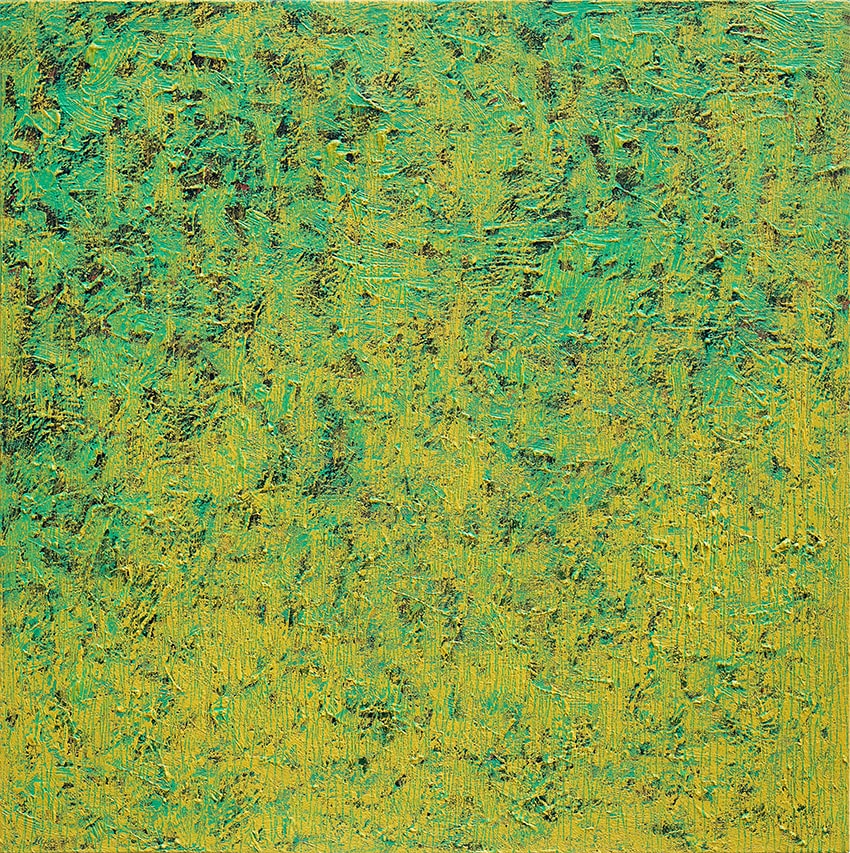
While it is true that the first glimpse of her work undoubtedly brings to mind the works of Jackson Pollock, tracing her roots back to surrealism, Maksuda Iqbal Nipa’s canvases come of far more agreeable, soothing even
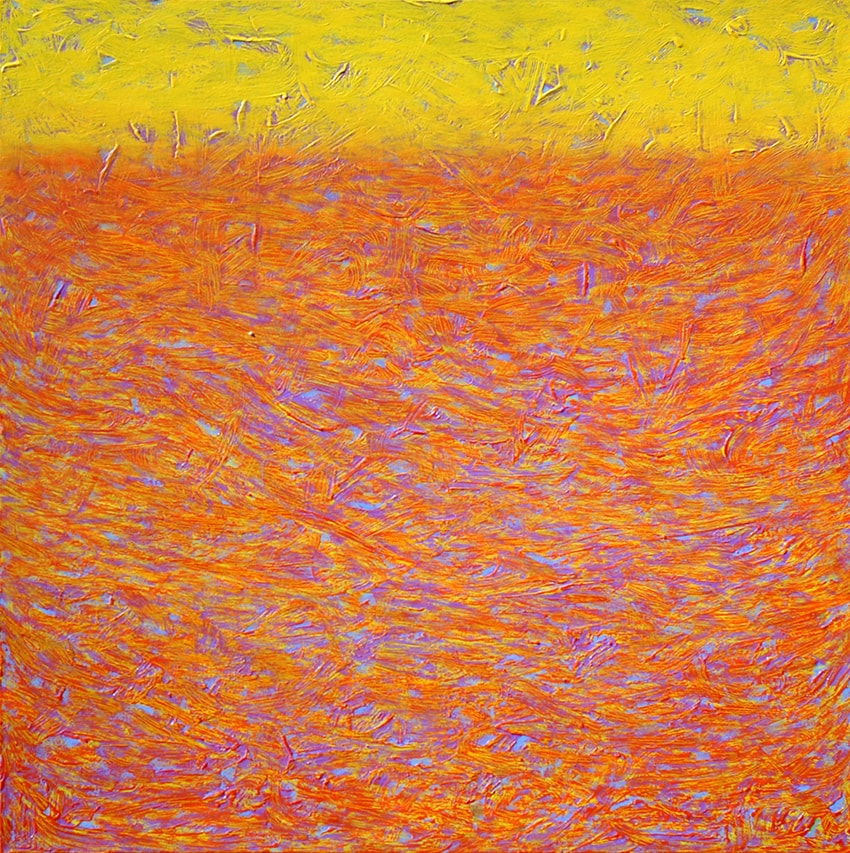
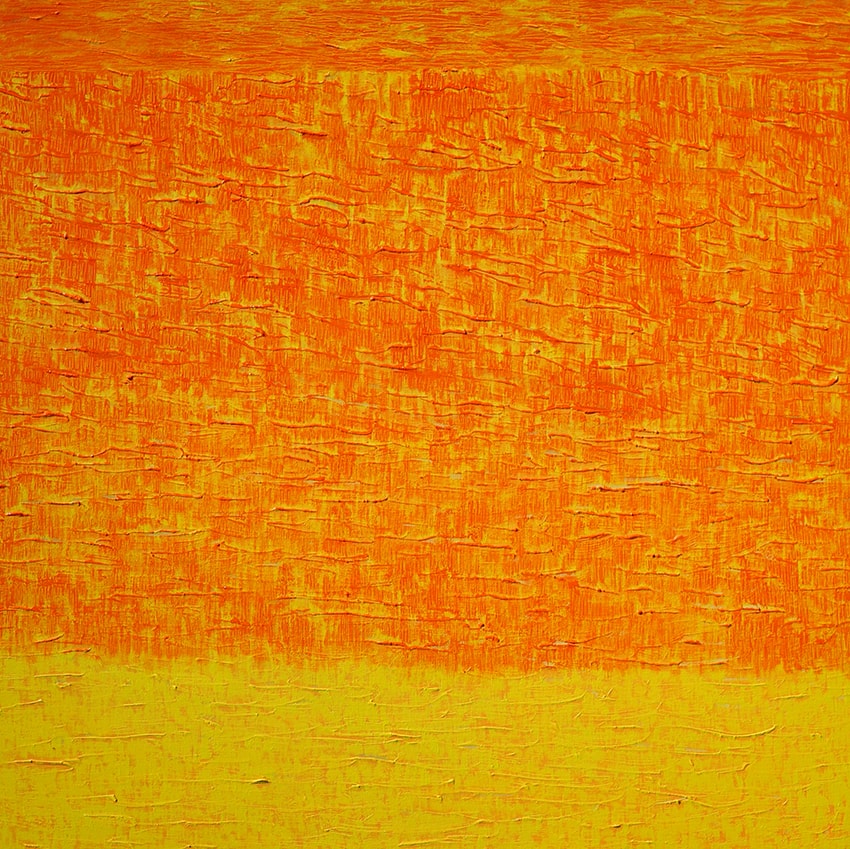
While it is true that the first glimpse of her work undoubtedly brings to mind the works of Jackson Pollock, tracing her roots back to surrealism, Maksuda Iqbal Nipa’s canvases come of far more agreeable, soothing even. Minimalist Abstract Expressionism works vary from super objective to abstract, and she has chosen abstract as her niche.
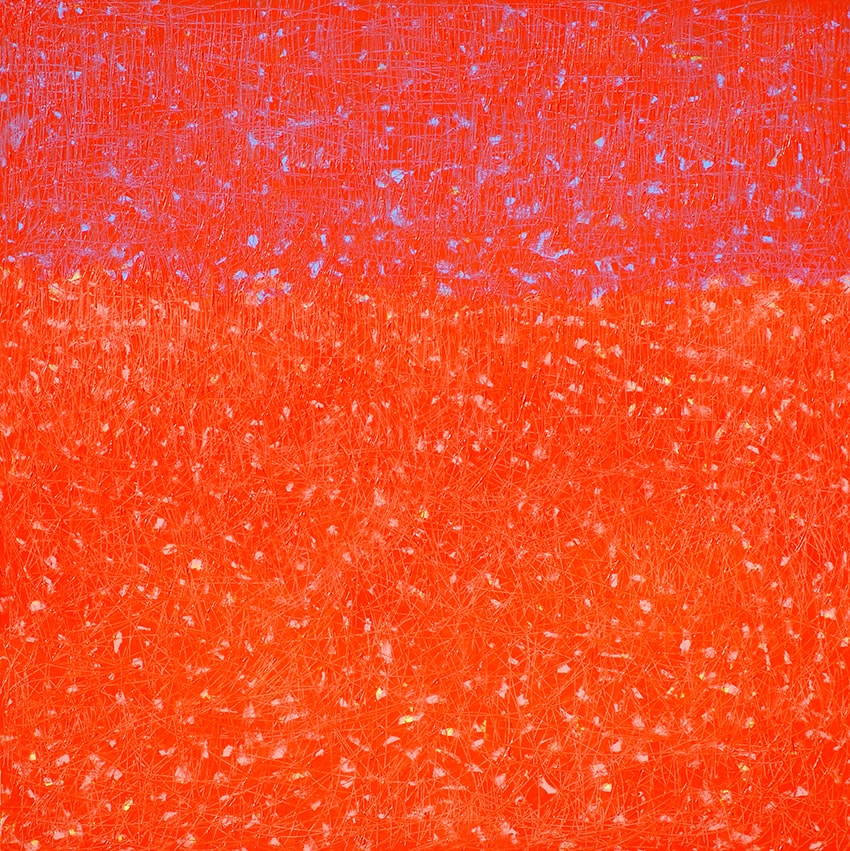
Nipa started from the realistic painting style in her research student days, turned into pure abstract in her graduate school days.
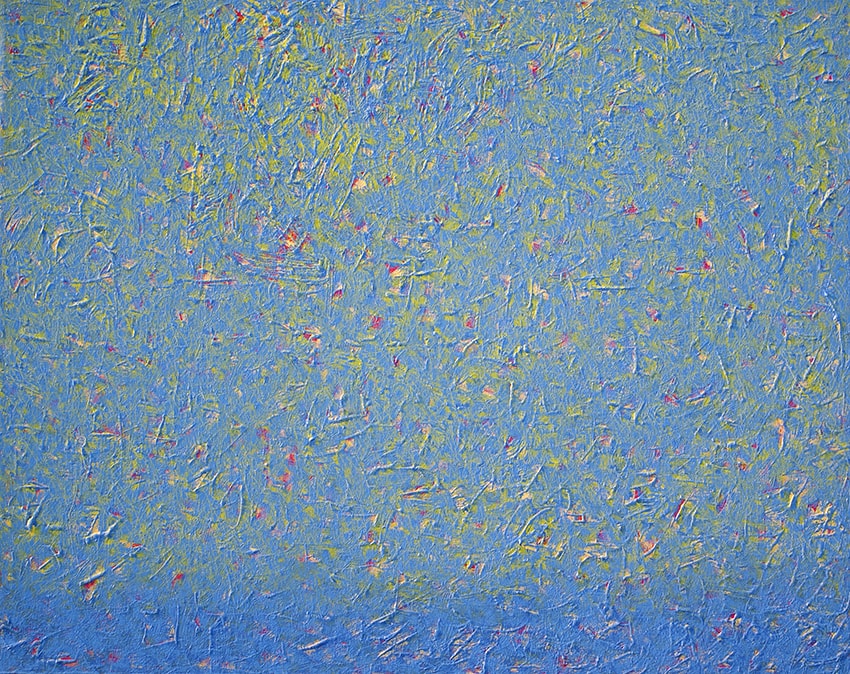
The artist strongly believes in continuity as well as achieving a strong basic expertise in realistic painting style, otherwise they won’t be able to grasp abstract well; their work will lack personal ingenuity. An artist needs to devote years, even decades, behind honing their skill set. Taking breaks in between hampers their progress. She has walked the same path in her journey. According to Akihito Matsumoto, ‘Nipa started from the realistic painting style in her research student days, turned into pure abstract in her graduate school days.’
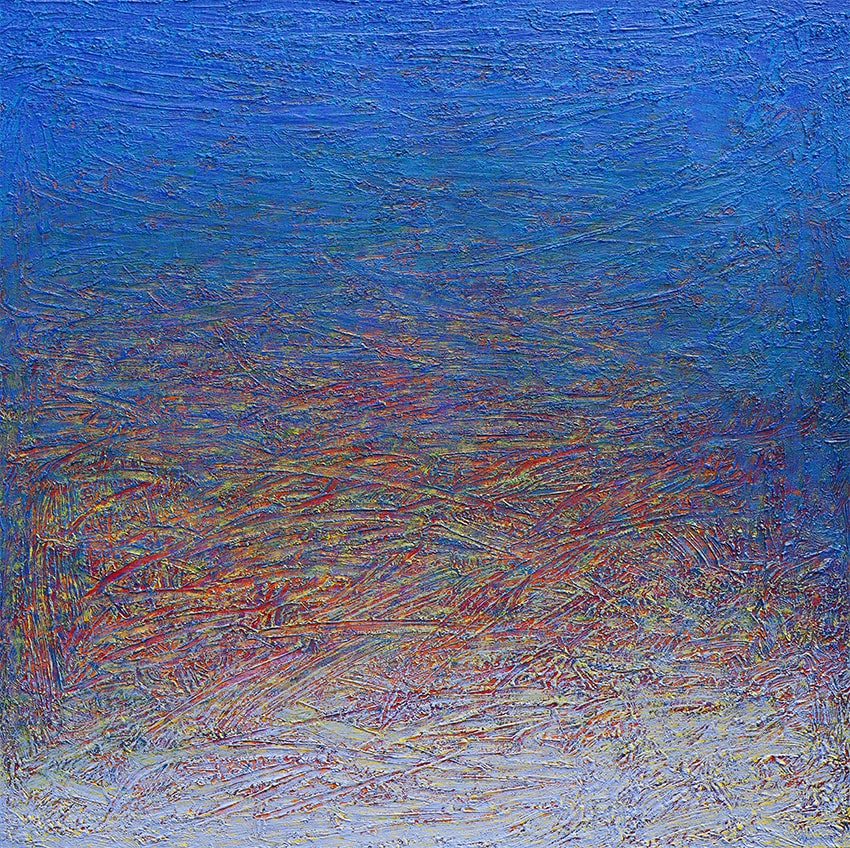
To savour Maksuda Iqbal Nipa’s paintings, one must look closer, for there is always more to them than meets the eye. A deep meditation lies behind all her works. While it is true that art represents different things to each individual, it is also said that art is more about what is felt and perceived rather than what is seen or observed. Perhaps this is why Maksuda Iqbal Nipa’s art tends to eliminate the unnecessary. There is an inclination of losing the self into a private monologue of layers, as a conversation between thoughts, memory and time. Form is broken, realism is left behind, boundaries and borders become obsolete. Vast Technicolor vistas consist of pictorial repetition are born through unique inspiration reflect her prolonged states of contemplation and obscured flights of fancy.
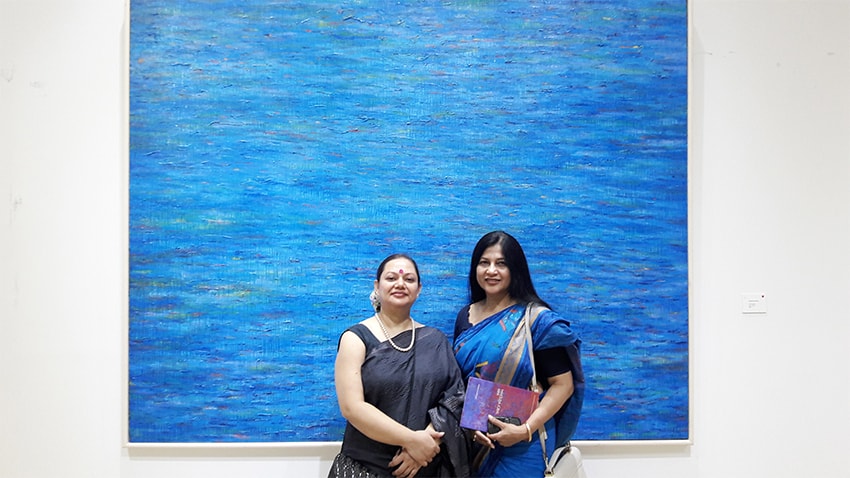
‘Art for art’s sake’, is something Maksuda Iqbal Nipa believes in. In our country art and art collection is still a luxury. Even gallery business is yet to become professional. In this scenario, she doesn’t like to confine herself to landscapes, portraits or familiar forms. Instead, her work is dialectic, horizontal or broken fragments of form illustrate her chosen modes. While she was studying in Japan, she had to write an essay about her work. It was titled Relationship Between Art Materials and Technique’. Just the naming indicates that technique is more important in her mind than subject. Often she stands before an empty canvas with no premeditated concept, the end result depends a lot one her perspectives. Subjective art has never held much attraction for her, she claims.
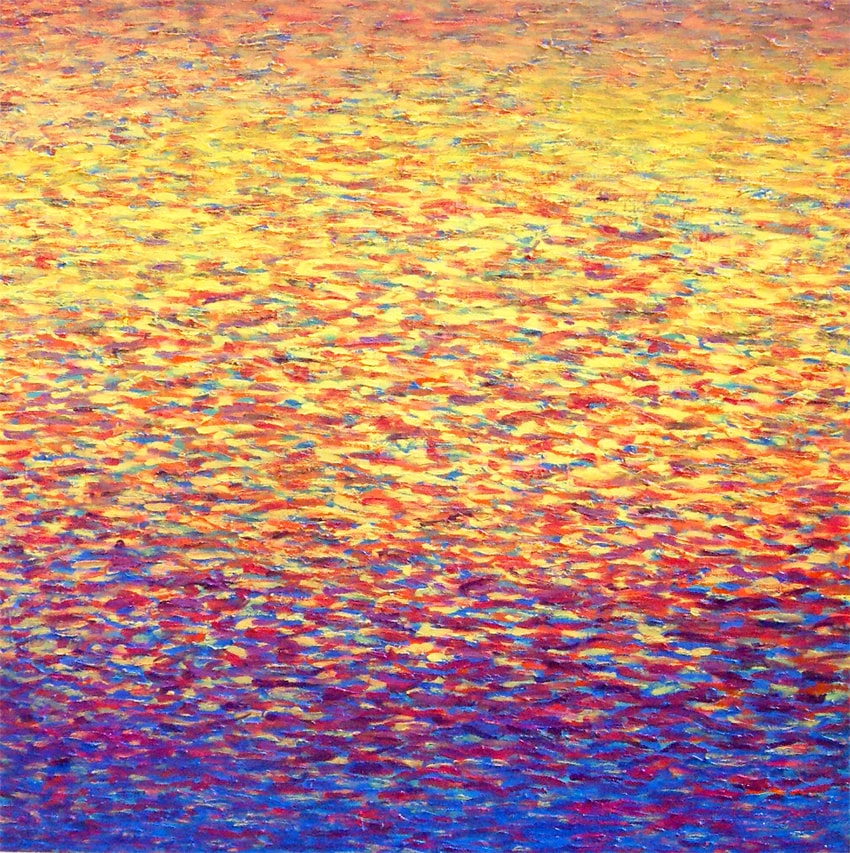
Maksuda Iqbal Nipa puts a lot of importance on technique and materials. A lot of people might think easel art is backdated, but it really depends on what height the artist is able to bring their work to. She always uses the best art materials and the best technique available. Even her canvases are custom made, making use of folding canvas stretcher which are not affected by weather and does not compromise the quality of the canvas. This kind of canvas costs three times more than local ones, yet this is what she favours. She credits Shilpacharya Joynul Abedin for introducing the concept of this kind of canvas to the country, but mentions that it is not used significantly among artists due to high cost.
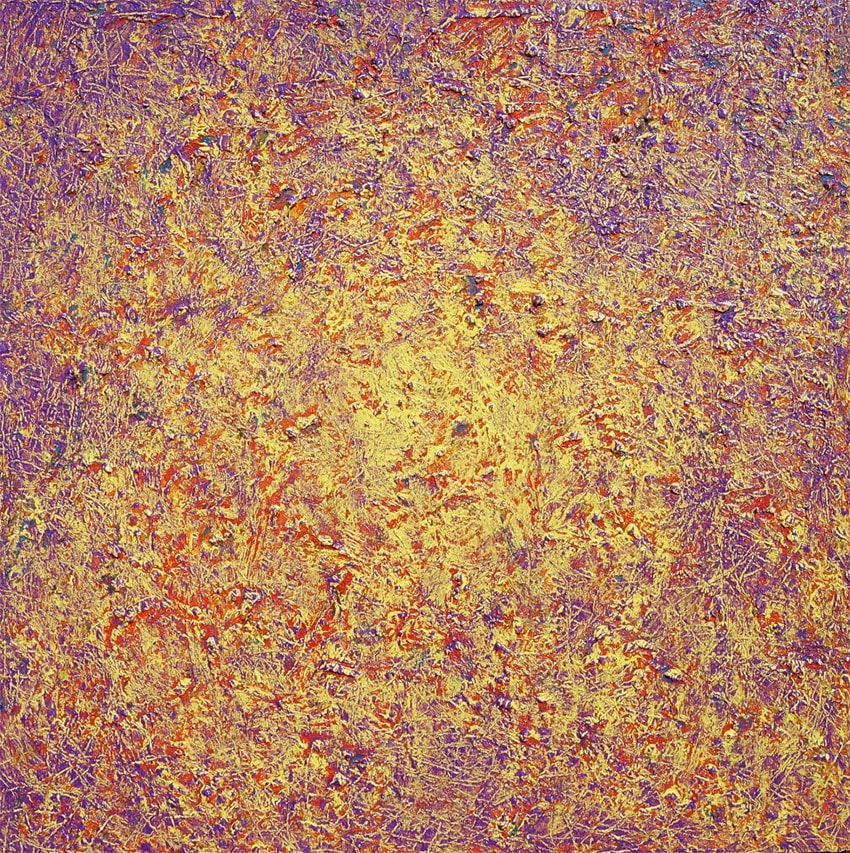
Maksuda Iqbal Nipa has one advice for the young, aspiring artists of Bangladesh, and that is to be consistent in making art. Every artist needs a legacy. Since our country is yet very young and our culture is still building up, every new artist should contribute and enrich history. Their art will be what we look back on after a hundred years that will be the legacy of Bangladeshi art. So they need to strive for excellence in their journey.
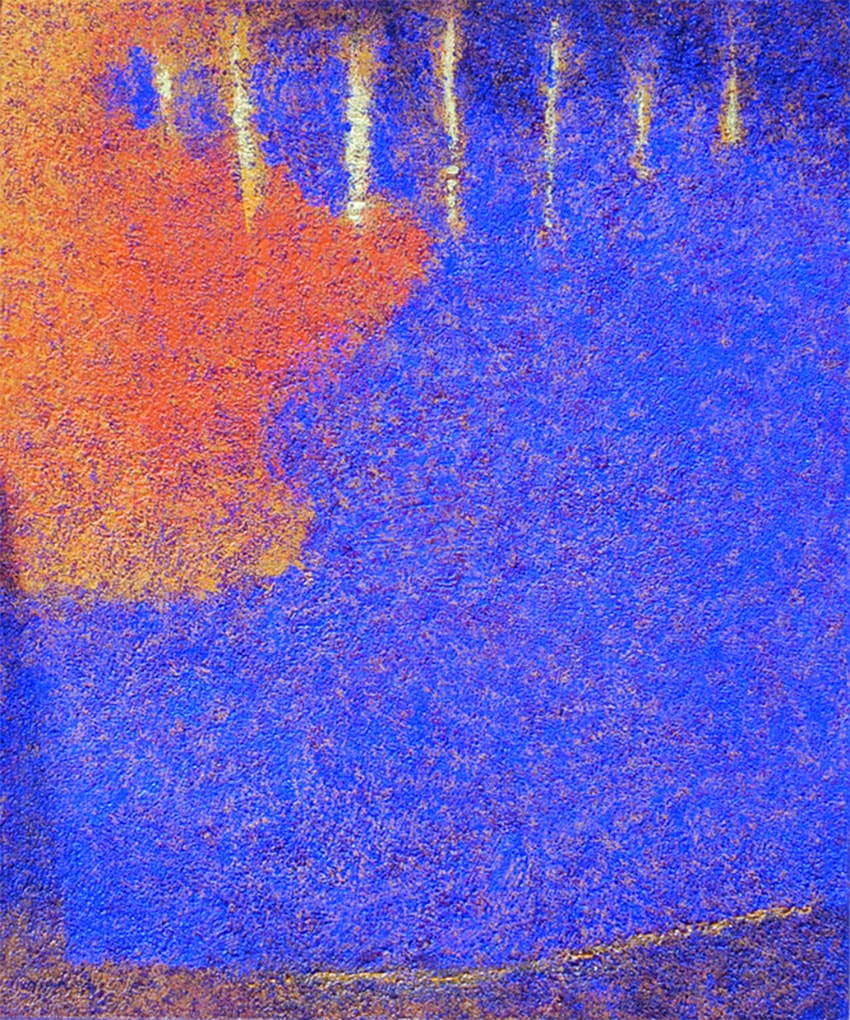
When we asked Maksuda Iqbal Nipa about the struggles that she might’ve faced in her road to become a prominent artist, she admitted that there weren’t as much struggle for her as her husband, Mohammad Iqbal had already been a popular artist while she was a student at Charukola and as such she had his guidance every step of the way. At that time Charukola had a limited number of students, but they were a group of close-knit people and they were helpful to each other. Even as Maksuda Iqbal Nipa moved to Japan, she had guidance from her mentor, Akihito Matsumoto which helped her greatly.
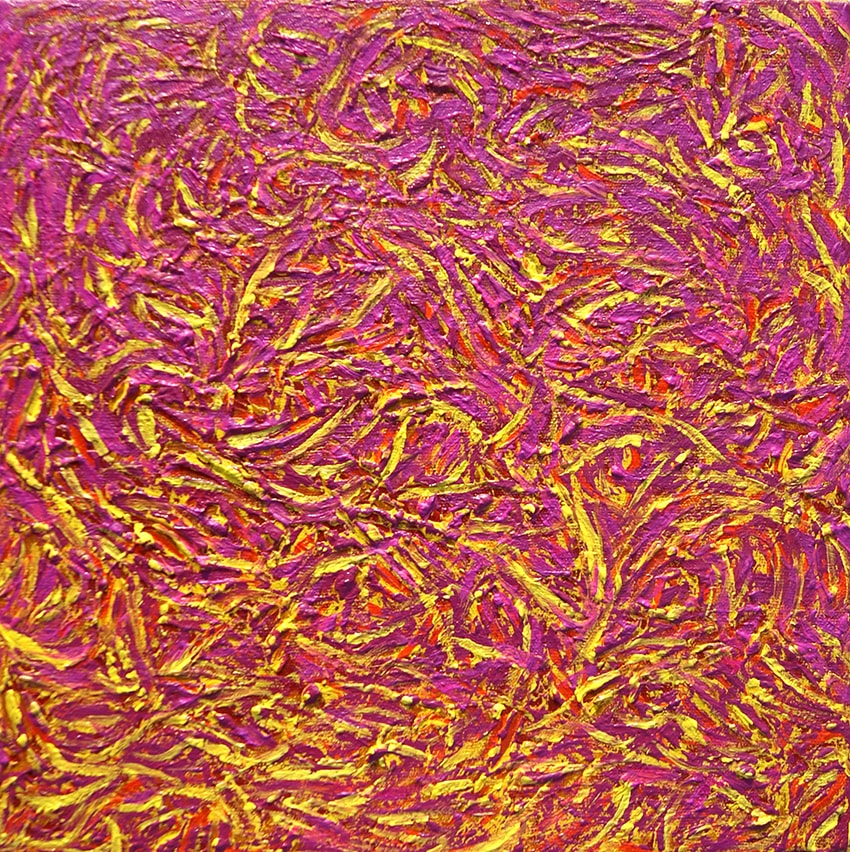
At present, Maksuda Iqbal Nipa is continuing in her quest to create. She has never felt the need to stop in between creating or to wait before painting. She had recently done a commission work of 37 pieces for the guesthouse of KEPZ in Chittagong. This was her largest, fastest commission work that she had undertaken to see how she herself copes with working in a limited frame of time.
About Artist
Maksuda Iqbal Nipa had studied first at Charukola and later completed M.Ed. in Fine Arts (Painting) from Aichi University of Education, Japan. Even though she had not been particularly interested in painting in her childhood, she now realizes that the vibrant colours from her childhood somehow always manifests in her canvases. She feels comfortable with her use of oil painting, as this media soothes her with its maturity, volume and malleability. As this medium is hard to handle, she had to work with it year after year to come to an understanding.




